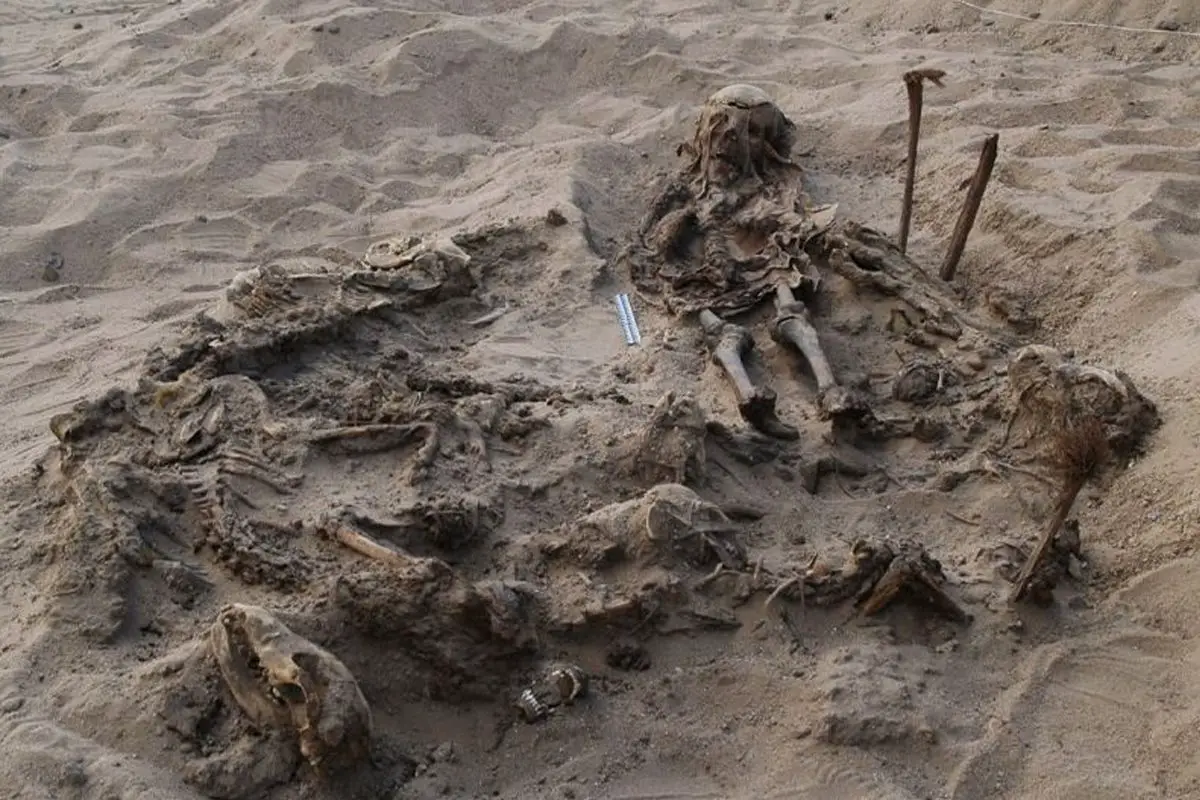Archaeologists have found the grave of a young child, buried with 142 dogs during excavations in the Faiyum Oasis necropolis.
The Faiyum Oasis is a depression in the desert, west of the Nile River, or just 62 miles south of Cairo, Egypt.
Faiyum was known to the ancient Egyptians as the twenty-first nome of Upper Egypt, Atef-Pehu (“Northern Sycamore”). Around the Oasis are the ruins of many ancient villages, and nearbye is the Ancient Egyptian city of Crocodilopolis/Arsinoe, which was dedicated to the crocodile god Sobek.
Archaeologists from CEI RAS have been excavating a necropolis at Fayoum for several years, revealing burials that date from the 4th century BC until the 7th century AD.
In recent excavations, the researchers found a burial of an 8-year-old child, placed on the remains of 142 dogs in the same grave. Zoologist, Galina Belova, has examined the dogs, concluding that they all died at the same time with no evidence of violence.
Traces of blue clay, which is common in Ancient Egyptian reservoirs, were found on the dog remains, suggesting that they may have been near a water source that flooded, causing them to drown.
As to why the child came to be in the grave is a mystery. It is possible that the child was caring for the animals, but even more confusing is that the child was found with a linen bag placed on their head.
Another burial has been previously found at the necropolis with a similar linen bag placed on the deceased’s head, however, this other burial was likely executed and was found with an arrow in his chest.
Header Image Credit : CEI RAS





